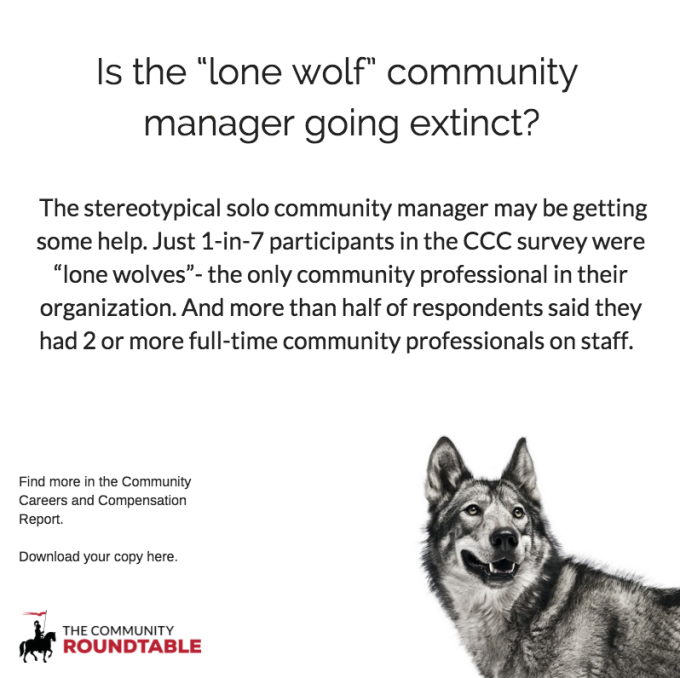By Ted McEnroe, Head of Research, The Community Roundtable
It’s one of the unfortunate clichés of the history of community management – the image of an overworked, isolated, solo practitioner, a lone wolf community manager, working to keep the community moving forward while the rest of the organization spins unknowingly around him (or her).
But there are signs that times are changing.
Just 1-in-7 of those community professionals who completed the Community Careers and Compensation 2015 survey identified themselves as “lone wolves,” the only resource in their community program. And more than half of the respondents said there were 2 or more full-time community managers on staff in their organization.
It’s a remarkable statistic, and it deserves a couple of small asterisks. First, there is likely some self-selection here, as busy “lone wolves” might not have taken the time to complete the survey. Second, it should be pointed out that even if lone wolves are becoming less common in organizations, the idea of one community manager per community is still prevalent. The State of Community Management report, which looked at individual communities, as opposed to community programs, found that 7-in-10 communities had one full- or part-time community manager in charge.
What should you make of this? That more and more organizations are seeing the opportunity in having the community team in place to ensure communities can take an important role in the organization. There’s still work to be done – but it’s a promising sign. And for now it looks like maybe the lone wolf community manager is going extinct.
See the community staffing data now by visiting communityroundtable.com/ccc2015 to download the Executive Summary, or contribute your data to the ongoing research and get the full report for free. Visit the.cr/ccc2015survey now!

